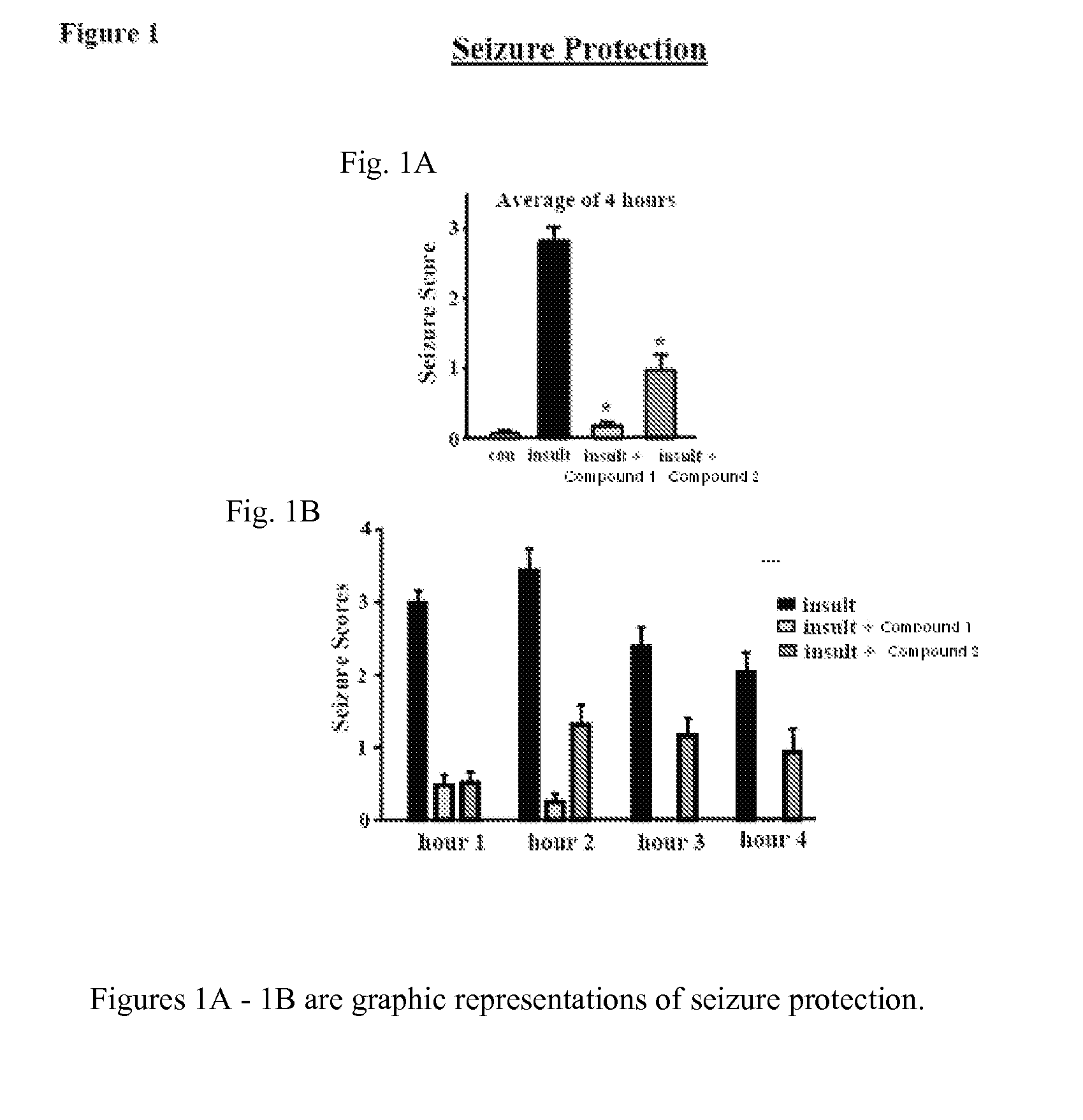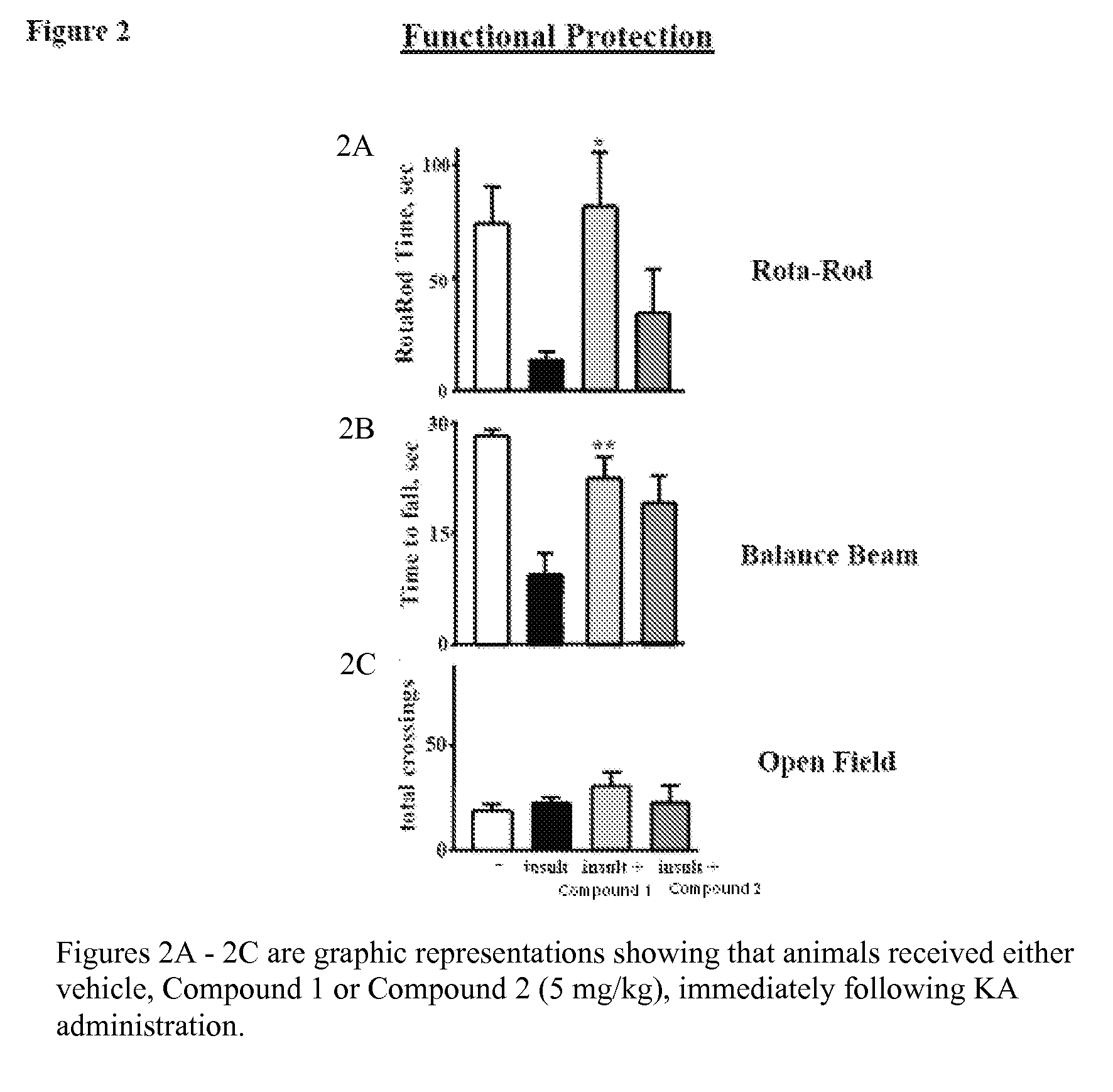Inhibitors of Fatty Acid Amide Hydrolase and Monoacylglycerol Lipase for Modulation of Cannabinoid Receptors
a technology which is applied in the field of inhibitors of fatty acid amide hydrolase and monoacylglycerol lipase for modulation of cannabinoid receptors, can solve the problems of limited effect and short-lived effect of these responses
- Summary
- Abstract
- Description
- Claims
- Application Information
AI Technical Summary
Benefits of technology
Problems solved by technology
Method used
Image
Examples
examples
Testing of Inhibitory Compounds
1. Vector Construction
[0254]A full-length cDNA clone of the human MGL transcript variant 1 (gi: 51242951) was obtained from OriGene Technologies (Rockville, Md.). The coding part of the MGL sequence (except the translation initiation codon ATG) was amplified by a polymerase chain reaction (PCR) using forward AACACGTGCCAGAGGAAAGTTCCC and reverse AAGAGCTCAGGGTGGGGACGCAG primers containing PmlI and Sad restriction enzyme recognition sites, respectively. iProof high-fidelity DNA polymerase (Bio-Rad, Hercules, Calif.) was used in the PCR amplification with 33 cycles, each consisting of denaturation at 94° C. for 10 s, annealing at 55° C. for 33 s, and extension at 72° C. for 1 min. The PCR product and pET45b vector were digested with PmlI and Sad restriction enzymes, and the vector was dephosphorylated with CIP followed by in-gel purification using the MinElute Gel Extraction Kit (Qiagen Corp., Valencia, Calif.). The fragment was inserted into the vector di...
PUM
| Property | Measurement | Unit |
|---|---|---|
| Molar density | aaaaa | aaaaa |
| Molar density | aaaaa | aaaaa |
| Molar density | aaaaa | aaaaa |
Abstract
Description
Claims
Application Information
 Login to View More
Login to View More - R&D
- Intellectual Property
- Life Sciences
- Materials
- Tech Scout
- Unparalleled Data Quality
- Higher Quality Content
- 60% Fewer Hallucinations
Browse by: Latest US Patents, China's latest patents, Technical Efficacy Thesaurus, Application Domain, Technology Topic, Popular Technical Reports.
© 2025 PatSnap. All rights reserved.Legal|Privacy policy|Modern Slavery Act Transparency Statement|Sitemap|About US| Contact US: help@patsnap.com



